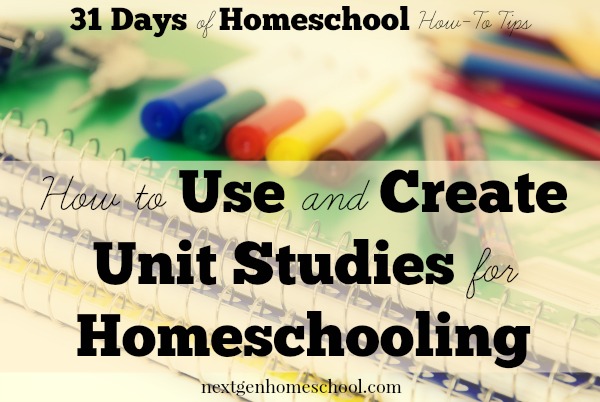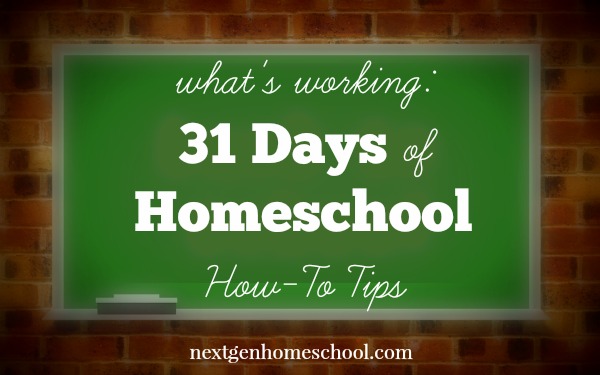Welcome to our October “31 Days” series at NextGen Homeschool: 31 Days of Homeschool How-To Tips! As NextGen Homeschoolers, we remember what it was like to be homeschooled ourselves, and our experiences as students have helped shape many of our best systems and strategies today. In the next 31 days, we’ll be sharing with you what’s working for us, answering the most common questions we get from today’s first-generation homeschooling moms.
How to Use and Create Unit Studies for Homeschooling
It took me a couple of years of adjusting to the homeschooling life to realize that homeschooling is about so much more than cracking open curriculum at the dining room table everyday. It’s an opportunity to develop a lifestyle of learning for your family. To me, a lifestyle of learning means recognizing that life itself presents countless learning opportunities. Figuring out how to tap into those opportunities is the next step.
Unit studies are my favorite way to capture a life experience in a simple, effective and organized way. If you’re unfamiliar with unit studies, here’s a quick definition: Unit studies take a cross-subject approach to education, focusing the learning experience around a central, common theme. Unit studies can include history, geography, science, language arts, creative arts, and sometimes even math! Unit studies are also helpful for working with children of different ages: They can study the same unit together, but the details and activities will vary based on their level of ability.
Unit Studies for Core Curriculum
Some for-purchase curriculum programs take a unit study approach and provide a year-long learning experience that can take the place of subject-specific curriculum and can be used across multiple ages. We use Trail Guide to Learning, a unit study program, as our core curriculum for the school year. Trail Guide to Learning uses the “spine” of history and attaches multiple subjects — such as reading, grammar, spelling, geography, science and art — around a common time period.
What I personally love about the unit study approach is that I can still supplement along the way in areas of specific interest for my girls or areas where they need more review, while still using Trail Guide as our core curriculum and working together on most subjects. For example, this year we are adding more science from Apologia to dig deeper into areas such as botany and land animals because we want to put into practice what we’re learning in our backyard garden and when exploring the nearby Rocky Mountains.
Creating Your Own Unit Study
You can also create your own unit studies to supplement your year-long curriculum plan, taking advantage of travel opportunities or new interests your children express. For example, last year we took a last-minute trip to Jackson Hole, Wyoming, to accompany my husband on a business trip. I decided to pull together some materials to create a unit study around this trip, so we will be able to continue “school” every day while on the road.
When I create my own unit study, I start with what’s FREE: I do everything I can to pull together free resources for supplemental studies. As homeschooling has grown more prevalent in recent years, you can now purchase a unit study on almost any topic from homeschooling resources such as UnitStudy.com (Unit Studies by Amanda Bennett) and CurrClick.com (Curriculum & Classes in a Click). However, I am a frugal homeschooler, and if I have the time to put something together on my own, I usually start with what’s freely available.
Here are three places to start searching when creating your own unit study:
- Literature and a trip to the Library: Look for age-appropriate fiction and non-fiction books that tie in to your topic.
- Google and a trip around the Internet: Look for free printables, research-rich Web sites, videos and photos.
- Simple supplies and a trip to your supply closet: Pull out three-prong folders, printer paper, spiral notebooks and art supplies.
For a step-by-step guide on what to look for and how to assemble your own unit study, see my previous post on this topic.
Have you ever used a unit study approach in your homeschool? Was it for supplemental learning (like capturing the education taking place on a field trip), or do you use unit studies as your primary method for teaching? Did you create a unit study yourself or purchase one?





